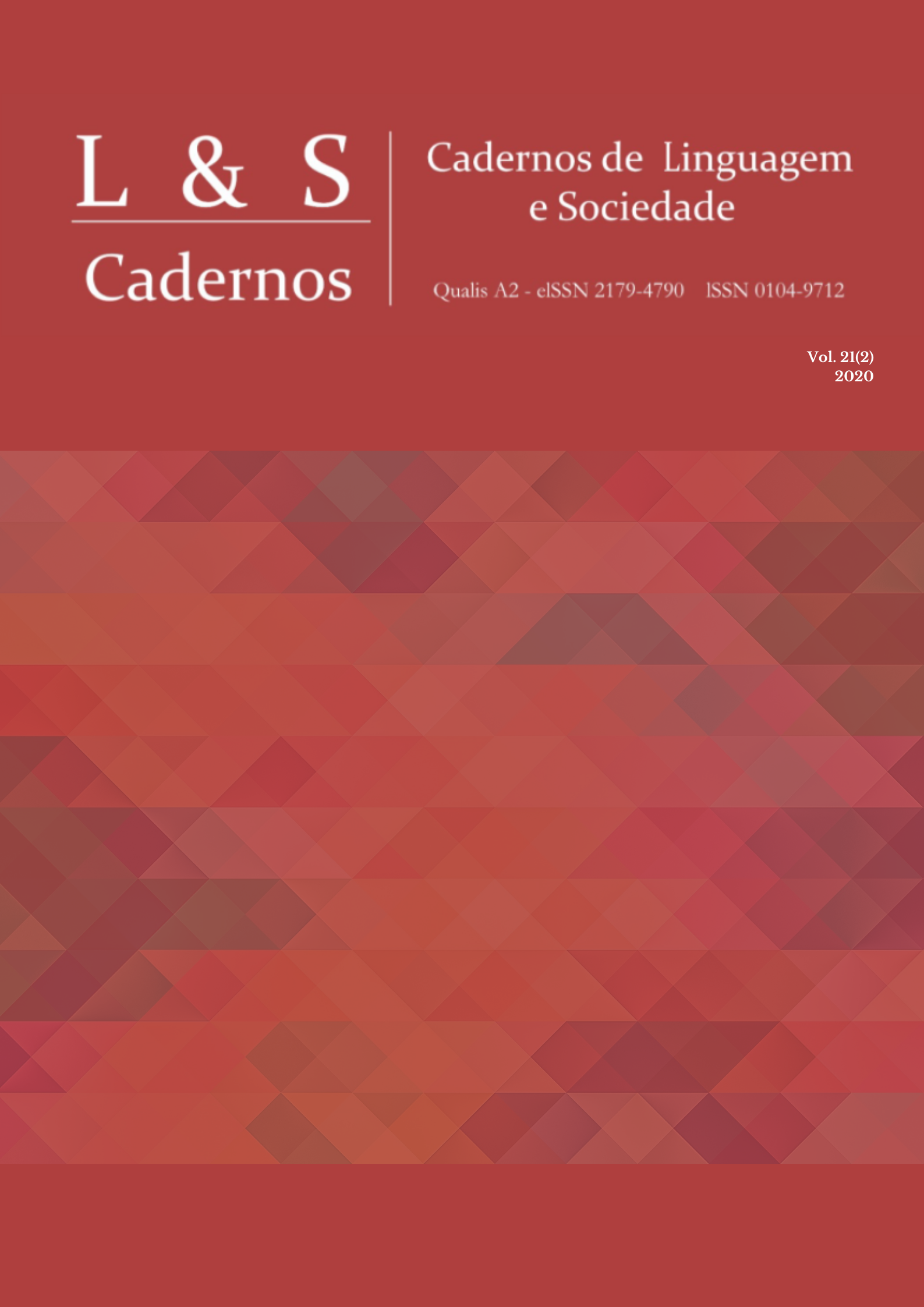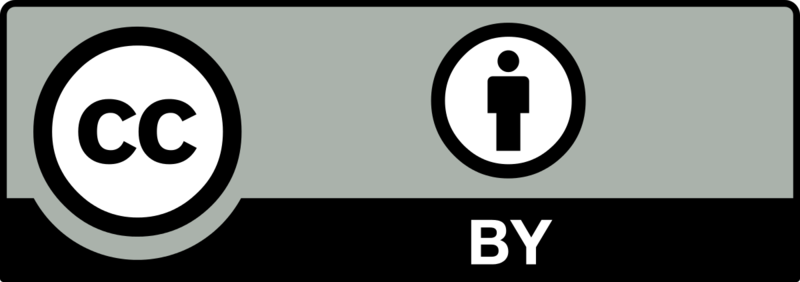Language Policy in the Virtual Linguistic Landscape: The case of the Kingdom of Bahrain E-Government National Portal
DOI:
https://doi.org/10.26512/les.v21i2.29354Palavras-chave:
Bahrein, Política de idiomas, Cenário linguístico virtual, Portal de governo eletrônicoResumo
Este estudo examinou a política de linguagem no cenário lingüístico virtual do Reino do Bahrein, como exemplificado em seu Portal Nacional de Governo Eletrônico. O objetivo é estender a visão da paisagem linguística para além da pesquisa convencional, que normalmente é ancorada e definida dentro dos parâmetros de determinadas fronteiras geográficas. Procurou responder à questão de como a diversidade linguística é vivenciada no ciberespaço. A Teoria do Modelo de Preferências de Spolsky e Cooper (1991) foi utilizada para abordar esta questão. As descobertas autenticam a suposição de que o cenário linguístico virtual do Bahrein compartilha não apenas características específicas com contrapartes físicas, mas também exibe atributos únicos.
Downloads
Referências
AJSIC, A.; McGROARTY, M. Mapping language ideologies.In: HULT, Francis M.; JOHNSON, David Cassels (ed.). Research methods in language policy and planning: A practical guide. John Wiley & Sons, Inc., 2015. p. 81-192.
AL-NAIMAT, et al. The Englishization of Materiality in the Linguistic Landscape of a Southern Jordanian City. Arab World English Journal (AWEJ), v. 9, p. 88-107, 2018.
ASFAHA, Y. English literacy in schools and public places in multilingual Eritrea. In: CRAATS, I. van de; KURVERS, J. (ed.). Low-educated adult second language and literacy acquisition. Proceedings of the 4th symposium. Utrecht: LOT, 2009. p. 213”“221.
BACKHAUS, P. Linguistic landscapes: A comparative study of urban multilingualism in Tokyo. Clevedon, England: Multilingual matters. 2007.
BANU, R.; SUSSEX, R. English in Bangladesh after independence: Dynamics of policy and practice. 2001.
BEN SAID, S. Urban Street Signs in the Linguistic Landscape of Tunisia: Tensions in Policy, Representation, and Attitudes. Ph.D. Dissertation, Penn State University, State College. 2010.
BEN-RAFAEL, E. A sociological approach to the study of linguistic landscapes. In: SHOHAMY, E.; GORTER, D. (ed.). Linguistic landscape: Expanding the scenery. New York, NY: Routledge. 2009. p. 40-54.
BEN-RAFAEL, et al. Linguistic landscape as symbolic construction of the public space: The case of Palestine. International journal of multilingualism, v. 3, n. 1, p. 7-30, 2006.
BLOMMAERT, J. The sociolinguistics of globalization. Cambridge, England: Cambridge University Press. 2010.
BUCKINGHAM, L. Commercial signage and the linguistic landscape of Oman. World Englishes, v. 34, n. 3, p. 411- 435, 2015.
CALVET, L. La sociolinguistique. [Sociolinguistics]. Paris: Presses universitaires de France. 1993.
CALVET, L.; BROWN, A. Towards an ecology of world languages. Cambridge, England: Polity. 2006.
CENOZ, J.; GORTER, D. Linguistic landscape and minority languages. International Journal of Multilingualism, v. 3, n. 1, p. 67-80, 2006.
COUPLAND, N. Welsh linguistic landscapes “from above” and “from below.” In: JAWORSKI A.; THURLOW, C. (ed.). Semiotic landscapes: Language, image, space. London, England: Continuum. 2010. p. 77-101.
CURTIN, M. Languages on display: Indexical signs, identities and the linguistic landscape of Taipei. In: SHOHAMY, E.; GORTER, D. (ed.). Linguistic landscape: Expanding the scenery. New York, NY: Routledge. 2009. p. 221-237.
DE SWAAN, A. Words of the world: The global language system. Hoboken: John Wiley & Sons, 2013.
ELLESTRÖM, L. Media borders, multimodality and intermediality. Houndmills, UK: Palgrave Macmillan, 2010.
GOMAA, Y. Linguistic Landscape in the Arabian Gulf: The Case of Manama, Kingdom of Bahrain. Hermes. Cairo, Egypt: Cairo University Canter for Languages and Professional Translation, v. 6, n. 2, p. 247-289, 2017.
GORTER, D. Linguistic landscapes in a multilingual world. Annual Review of Applied Linguistics, v. 33, p. 190-212, 2013.
GRIFFIN, J. The presence of written English on the streets of Rome. English Today, v. 20, n. 2, p. 3-8, 2004.
HUEBNER, T. Bangkok’s linguistic landscapes: environmental print, code mixing and language change. Gorter (Doctoral dissertation, D. (Ed.), Linguistic landscape: a new approach to multilingualism. Clevedon: Multilingual Matters: p. 31-52, 2006.
IVKOVIĆ, D.; LOTHERINGTON, H. Multilingualism in cyberspace: Conceptualising the virtual linguistic landscape. International Journal of Multilingualism, v. 6, n. 1, p. 17-36, 2009.
JACKENDOFF, R. Semantics and cognition. Cambridge, MA: MIT Press. 1983
KELLY-HOLMES, H. ‘Choose your language!’ categorisation and control in cyberspace. Sociolinguistica, v. 27, n. 1, p. 132-145, 2013.
LANDRY, R.; BOURHIS, R. Linguistic landscape and ethnolinguistic vitality: An empirical study. Journal of language and social psychology, v. 16, no. 1, p. 23-49. landscape of Taipei. In: SHOHAMY, E.; GORTER, D. (ed.). Linguistic landscape: Expanding. 1997.
LANZA, E.; WOLDEMARIAM, H. Language ideology and linguistic landscape: Language policy and globalization in a regional capital of Ethiopia. In: Linguistic Landscape. New York: Routledge, 2008. p. 229-245,
LANZA, E.; WOLDEMARIAM, H. Indexing modernity: English and branding in the linguistic landscape of Addis Ababa. International Journal of Bilingualism, v. 18, n. 5, p. 491-506, 2014.
MANOVICH, L. The language of new media. Cambridge, Mass: MIT Press. 2010.
McARTHUR, T. Interanto: The global language of signs. English Today, v. 16, n. 1, p. 33-43, 2000.
MUFWENE, S. Language evolution: Contact, competition and change. London, England: Continuum. 2008.
REH, M. Multilingual writing: A reader-oriented typology””with examples from Lira Municipality (Uganda). International journal of the sociology of language, v. 170, p. 1-41, 2004.
SCOLLON, R.; SCOLLON, S. Discourses in place: Language in the material world. London, England: Routledge. 2003.
SHOHAMY, E. Language policy: Hidden agendas and new approaches. Abingdon, England: Routledge. 2006.
SHOMAMY, E.; WAKSMAN, S. Linguistic Landscape as an Ecological Arena: Modalities, Meanings, Negotiations, Education. In: SHOHAMY, E.; GORTER, D. (ed.). Linguistic landscape: Expanding the scenery. New York, NY: Routledge. 2009. p. 313-331.
SPOLSKY, B. Language management. Cambridge, England: Cambridge University Press. 2009.
SPOLSKY, B.; COOPER, R. The languages of Jerusalem. Oxford, England: Oxford University Press. 1991.
THE KINGDOM OF BAHRAIN E-GOVERNMENT PORTAL. Retrieved March 21, 2020, from https://www.bahrain.bh/wps/portal/
TRUMPER-HECHT, N. Constructing national identity in mixed cities in Palastine: Arabic on signs in the public space of upper Nazareth. In: SHOHAMY, E.; GORTER, D. (ed.). Linguistic landscape: Expanding the scenery. New York, NY: Routledge. 2009. p. 238-252.
YOUNG, H. The digital language divide: How does the language you speak shape your experience of the Internet. The Guardian. GRIFFIN, J. The presence of written English on the streets of Rome. English Today, v. 20, n. 2, p. 3-8, 2004. Retrieved October 2, 2019, from http://labs.theguardian.com/digital-language-divide/
Downloads
Publicado
Como Citar
Edição
Seção
Licença
Copyright (c) 2020 Cadernos de Linguagem e Sociedade do Programa de Pós-Graduação em Linguística da UnB é licenciado sob uma Licença Creative Commons Atribuição-Uso não-comercial-Vedada a criação de obras derivadas 3.0 Unported.

Este trabalho está licenciado sob uma licença Creative Commons Attribution 4.0 International License.
Autores/as que publicam nesta revista concordam com os seguintes termos:
Autores/as mantêm os direitos autorais e concedem à revista o direito de primeira publicação, sendo o trabalho simultaneamente licenciado sob a Creative Commons Attribution 4.0 International license que permite o compartilhamento do trabalho com reconhecimento da autoria do trabalho e publicação inicial nesta revista.



